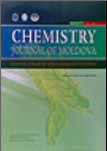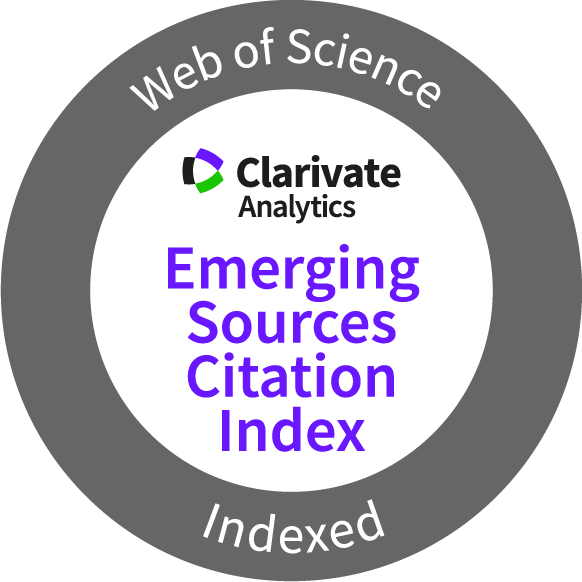Chemistry Journal of Moldova
Research paper
Author(s):
Field: Organic chemistry
Type: Research paper
Issue: 2011 Volume 6, no.1
Pages: 90-100
Zinaida Ribkovskaia, Serghei Pogrebnoi, Alic Barba, Fliur Macaev
Field: Organic chemistry
Type: Research paper
Issue: 2011 Volume 6, no.1
Pages: 90-100
Full Text (PDF): Download
Author(s):
Field: Organic chemistry
Type: Research paper
Issue: 2011 Volume 6, no.1
Pages: 86-89
Sîrbu Dumitru, Marin Ion
Field: Organic chemistry
Type: Research paper
Issue: 2011 Volume 6, no.1
Pages: 86-89
Full Text (PDF): Download
DOI: dx.doi.org/10.19261/cjm.2011.06(1).05
Graphical Abstract: This article reports on the high yield synthesis and novel chalcones with isothiocyanate and imidazol groups. The synthesis was started from N,N-diphenilamine and finished with 4-(N,N-diphenylamino)-4’-(2-thioxo-imidazolidin-4-one)-chalcone, where the cheap and accessible reagents were used.
Downloads: 161
Author(s):
Field: Food chemistry
Type: Research paper
Issue: 2011 Volume 6, no.1
Pages: 81-85
Elena Nezalzova
Field: Food chemistry
Type: Research paper
Issue: 2011 Volume 6, no.1
Pages: 81-85
Full Text (PDF): Download
DOI: dx.doi.org/10.19261/cjm.2011.06(1).06
Graphical Abstract: Quality control of alcoholic beverages, coming into the market, is a defining element in preventing the production and supplying of defective products. One of the main criteria for quality control of wine distillates is to estimate their age, and more precisely the period of maturation as the dominant factor in determining the quality of cognacs and, consequently, their market price. On the opinion of majority scientists, one of the main factors, which determines the age of wine distillates, is the content of aromatic aldehydes, mostly vanillin, and their ratio.
Downloads: 35
Author(s):
Field: Ecological chemistry
Type: Research paper
Issue: 2011 Volume 6, no.1
Pages: 77-80
T. Lupaşcu, M. Ciobanu, O. Bogdevici, V. Boţan
Field: Ecological chemistry
Type: Research paper
Issue: 2011 Volume 6, no.1
Pages: 77-80
Full Text (PDF): Download
DOI: dx.doi.org/10.19261/cjm.2011.06(1).07
Graphical Abstract: It was established that the process of catalytic oxidation of methylene blue, at low concentrations (20 mg/L), i.e. in real solutions, gives sulfates and nitrates and new product, which can be categorized, in their vast majority, as impurities, probably got from the vacuum distillation unit, which make up for only ~ 10 % of methylene blue used in the experiment. Methylene blue adsorption at the interface occurs in real solutions. In case of performing the process at methylene blue concentration of 120 mg/L, hemi-micelles are adsorbed at the interface and the OH• radical acts more effectively due to the presence at the interface of a greater number of dye molecules.
Downloads: 26
Author(s):
Field: Analytical chemistry
Type: Research paper
Issue: 2011 Volume 6, no.1
Pages: 73-76
Valerian Cerempei
Field: Analytical chemistry
Type: Research paper
Issue: 2011 Volume 6, no.1
Pages: 73-76
Full Text (PDF): Download
DOI: dx.doi.org/10.19261/cjm.2011.06(1).08
Graphical Abstract: The article investigates phase stability for the mixtures of monoatomic alcohols (ethanol, butanol) with gasoline in the presence of water. There have been determined the optimal storage conditions of mixtures depending on their composition and mixing conditions. The positive influence of butanol on the phase stability of ethanol-gasoline mixtures was detected.
Downloads: 15
Author(s):
Field: Analytical chemistry
Type: Research paper
Issue: 2011 Volume 6, no.1
Pages: 62-68
Gheorghe Nemţoi, Tudor Lupaşcu, Alexandra Ciomaga, Alexandru Cecal
Field: Analytical chemistry
Type: Research paper
Issue: 2011 Volume 6, no.1
Pages: 62-68
Full Text (PDF): Download
DOI: dx.doi.org/10.19261/cjm.2011.06(1).09
Graphical Abstract: This paper presents the results of scientific research related to the electrochemical behavior of the complex preparation Enoxil. It was established that the oxidation-reduction process of Enoxil is quasireversible. The reactivity of Enoxil obtained from alcohol soluble enotannins is more pronounced, compared to that obtained from standard enotannins. The dependence of cathodic current intensity on Enoxil concentration is linear. This can be used to establish Enoxil concentration in solution. Cyclic voltamograms were used to establish reduction and oxidation potential and the formal redox potential on platinum electrode in sodium perchlorate aqueous environment. These features can be used for identification and determination of Enoxil in pharmaceuticals.
Downloads: 30
Author(s):
Field: Analytical chemistry
Type: Research paper
Issue: 2011 Volume 6, no.1
Pages: 69-72
Valerian Cerempei
Field: Analytical chemistry
Type: Research paper
Issue: 2011 Volume 6, no.1
Pages: 69-72
Full Text (PDF): Download
DOI: dx.doi.org/10.19261/cjm.2011.06(1).10
Graphical Abstract: The article investigates phase stability of ethanol-gasoline mixtures depending on their composition, water concentration in ethanol and ethanol-gasoline mixture and temperature. There have been determined the perfect functioning conditions of spark ignition engines fueled with ethanol-gasoline mixtures.
Downloads: 18
Author(s):
Field: Analytical chemistry
Type: Research paper
Issue: 2011 Volume 6, no.1
Pages: 57-61
I. Povar, Nina Timbaliuc, Tatiana Cazac, Diana Shepel, Oxana Spinu and Ludmila Chiriac
Field: Analytical chemistry
Type: Research paper
Issue: 2011 Volume 6, no.1
Pages: 57-61
Full Text (PDF): Download
DOI: dx.doi.org/10.19261/cjm.2011.06(1).11
Graphical Abstract: An approach has been developed to determine the equilibrium model in heterogeneous aqueous systems containing a mixture of solid phases from the initial composition of the heterogeneous mixture and the equilibrium values of the pH. This approach allows to significantly reduce the quantity of measured data, properly for solubility measurements. By using the new deduced equations it is possible to determine the solubility products of precipitates on the basis of the known composition of initial mixtures and pH values of saturated solutions avoiding some difficult experimental solubility measurements. The derived relations are useful for solving both direct and indirect equilibrium problems.
Downloads: 20
Author(s):
Field: Analytical chemistry
Type: Research paper
Issue: 2011 Volume 6, no.1
Pages: 52-56
Ludmila Chiriac, Tatiana Cazac, I. Povar and M. Revenco
Field: Analytical chemistry
Type: Research paper
Issue: 2011 Volume 6, no.1
Pages: 52-56
Full Text (PDF): Download
DOI: dx.doi.org/10.19261/cjm.2011.06(1).12
Graphical Abstract: The polarographic catalytic current in acid solutions of Mo(VI), thiosemicarbazone 2,3-dihydroxybenzaldehyde (TSC 2,3-DHBA) and chlorate ions has been investigated. The scheme of reactions, taking place in the solutions and on the electrode, has been proposed. The increase of the catalytic current is explained by the formation of an active intermediate complex [Mo(V)×TSC 2,3-DHBA (ClO-3)]. The rate constant of this complex formation K = 2.56 × 106 mol-1×dm3×s-1, the activation energy Ea = 15.9 kcal×mol-1 and the reaction activation entropy ∆Sa¹ = -23.5 e.u. have been calculated.
Downloads: 24
Author(s):
Field: Analytical chemistry
Type: Research paper
Issue: 2011 Volume 6, no.1
Pages: 45-51
Gheorghe Nemtoi, Liliana Airinei, Tudor Lupascu and Alexandru Cecal
Field: Analytical chemistry
Type: Research paper
Issue: 2011 Volume 6, no.1
Pages: 45-51
Full Text (PDF): Download
DOI: dx.doi.org/10.19261/cjm.2011.06(1).13
Graphical Abstract: The corrosion process of some steels immersed in HNO3 solutions of different concentrations by means of voltammetric measurements was investigated. For different values of the corrosion potential, or of the contact time: solid steel-aggressive medium, several equations of the type: I = f (E) were proposed, only for linear domains of the voltammograms.
Downloads: 20






